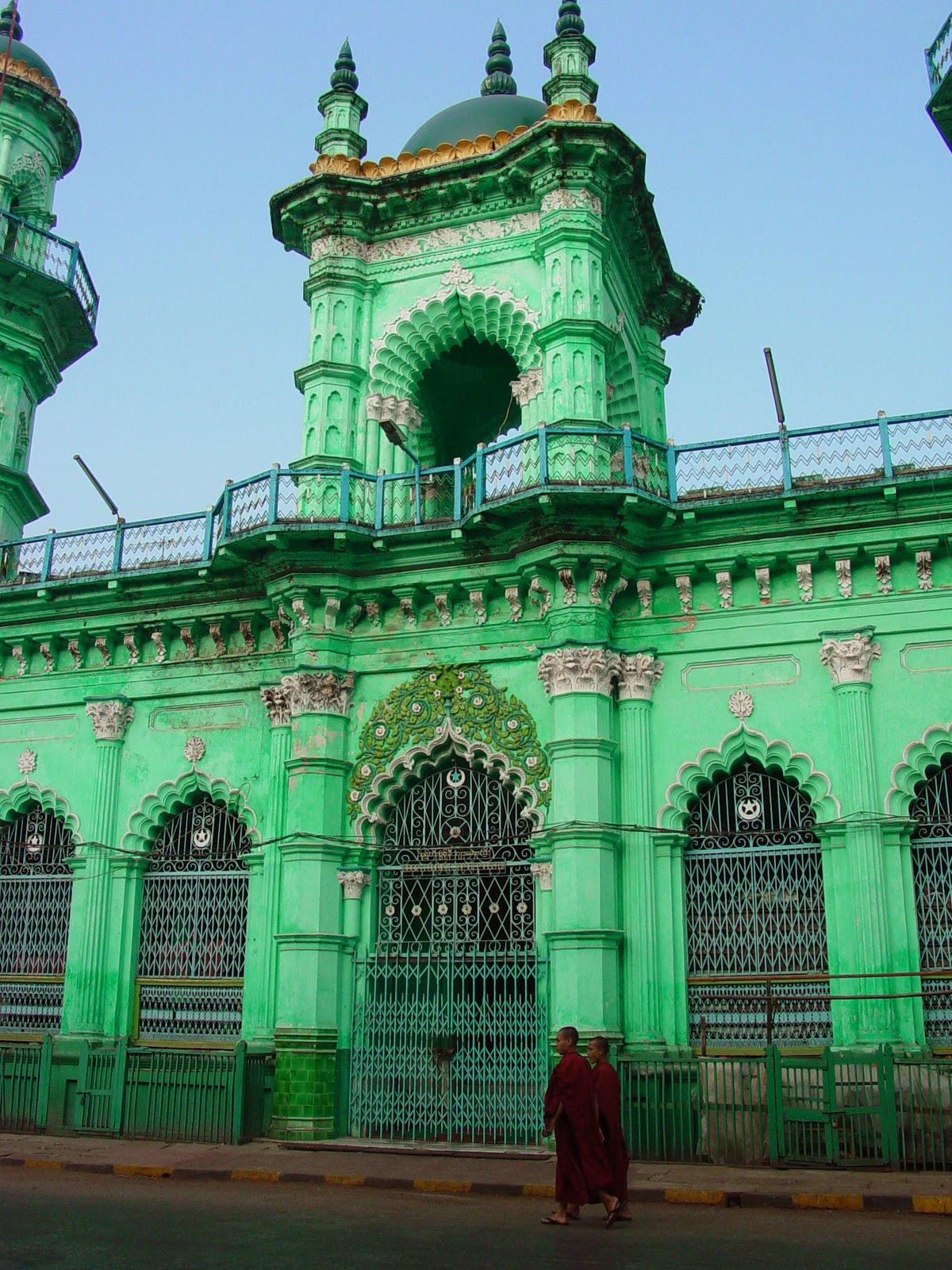
 I don't think anyone would ever describe Mawlawmyine as a majestic or beautiful city. It is steamy, rustic, provincial and yet very charming. Retaining a strong sense of its British colonial background with its crumbling Indian-style architecture, it has a large number of mosques and colored colonial homes.
I don't think anyone would ever describe Mawlawmyine as a majestic or beautiful city. It is steamy, rustic, provincial and yet very charming. Retaining a strong sense of its British colonial background with its crumbling Indian-style architecture, it has a large number of mosques and colored colonial homes.
 45km from the mouth of the Than-lwin River, it gives an outward impression of being a bustling, busy port, but in reality its undeveloped, quaint, welcoming homeliness undermines its position as Myanmar's third largest city. A 2004 3km bridge (the longest in Myanmar) brought it closer to the north of the country, but it still retains an isolated feel.
45km from the mouth of the Than-lwin River, it gives an outward impression of being a bustling, busy port, but in reality its undeveloped, quaint, welcoming homeliness undermines its position as Myanmar's third largest city. A 2004 3km bridge (the longest in Myanmar) brought it closer to the north of the country, but it still retains an isolated feel. The tall and visible Kyaikthanlan Paya stupa caps the hill at the center of town, while the larger complex of Mahamuni Paya Mon-style is just one of five separate monasteries stringing along the north-south ridge, and the Buddhist rituals of giving alms in the early morning continue here much as they do in the rest of the country. Rudyard Kipling immortalized it in the opening lines of Mandalay, where "Burma girl... is setting... by the old Moulmein Pagoda, lookin' lazy at the sea" (even if its actually the river and not the sea!). The 100 year old Seindon Mibaya Kyaung was the monastery where King Mindon Min's queen Seindon took refuge after Myanmar's last monarch, King Thibaw Min, took power. The silver-and-gold-plated Aung Theikdi Zedi, the panoramic U Khanti Paya, the U Zina Paya (named for a monk who dreamed of finding gems on this spot, and built the pagoda with the proceeds) make up the rest of the line.
The tall and visible Kyaikthanlan Paya stupa caps the hill at the center of town, while the larger complex of Mahamuni Paya Mon-style is just one of five separate monasteries stringing along the north-south ridge, and the Buddhist rituals of giving alms in the early morning continue here much as they do in the rest of the country. Rudyard Kipling immortalized it in the opening lines of Mandalay, where "Burma girl... is setting... by the old Moulmein Pagoda, lookin' lazy at the sea" (even if its actually the river and not the sea!). The 100 year old Seindon Mibaya Kyaung was the monastery where King Mindon Min's queen Seindon took refuge after Myanmar's last monarch, King Thibaw Min, took power. The silver-and-gold-plated Aung Theikdi Zedi, the panoramic U Khanti Paya, the U Zina Paya (named for a monk who dreamed of finding gems on this spot, and built the pagoda with the proceeds) make up the rest of the line. George Orwell was stationed here in the 1920s during his time in the Indian Imperial Police, and it was the capital of British Burma from 1827 to 1852 (when it was a major teak port), although Yangon and Pathein now see greater port trade.
George Orwell was stationed here in the 1920s during his time in the Indian Imperial Police, and it was the capital of British Burma from 1827 to 1852 (when it was a major teak port), although Yangon and Pathein now see greater port trade.
The impressive turquoise Kaladan Mosque (below) was designed by Sunni Muslims in the style of those similar to Penang and Kuala Lumpur (#899) and is partnered by the smaller blue Shiite Moghul Shiah Mosque (below), on the same side of the street. The Soorti Sunnin Jamai Mosque (above), however, takes the show because of its brilliant turquoise and white coloring. Rounding out the multicultural heritage are the Htyan Haw Chinese temple and the First Baptist Church (Judson Church).
Just off the coast is Shampoo Island (Gaungse Kyun), so called because of the Ava era annual royal hair-washing ceremony using water from a spring on this island. A boat out to the Shampoo and Bilu Kyun (Ogre Island) makes for a wonderful side trip because of the fascinating rubber band factory, the walking-stick craft shop, women making doormats out of coconuts, horse and carriage rides, not to mention the whitewashed/silver Sandawshin Paya. As always in Myanmar, however, the people were welcoming and genuine which made it special.
Source: Lonely Planet Myanmar (Burma) 9th Edition 2005












































No comments:
Post a Comment